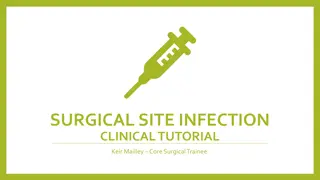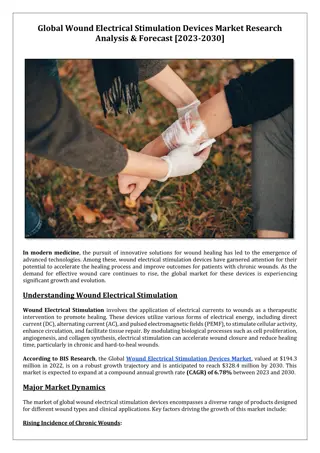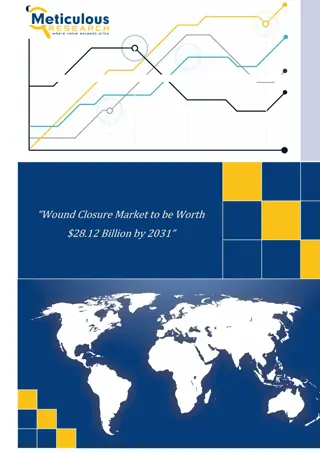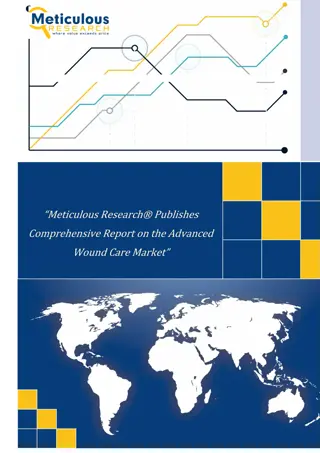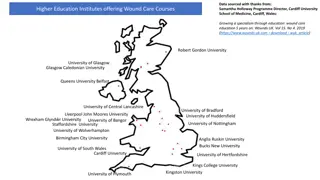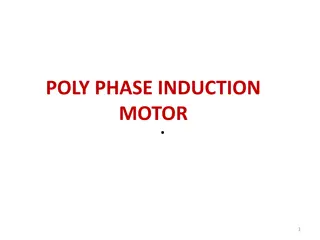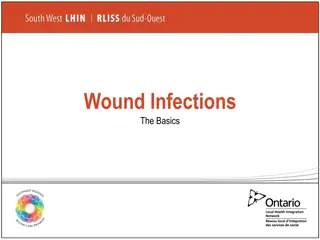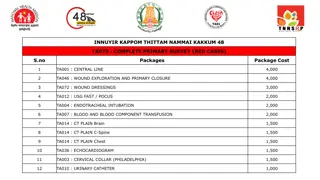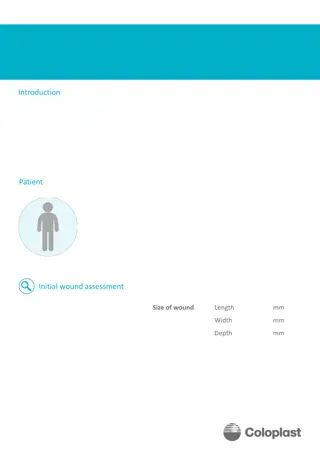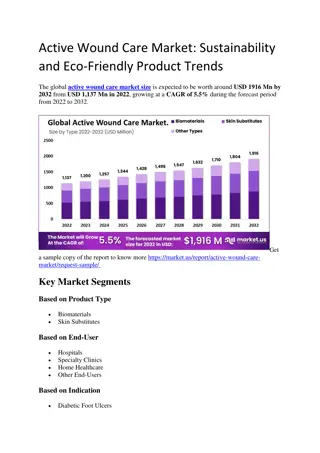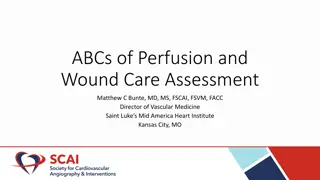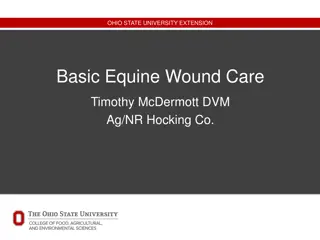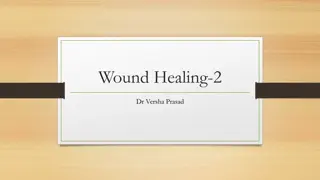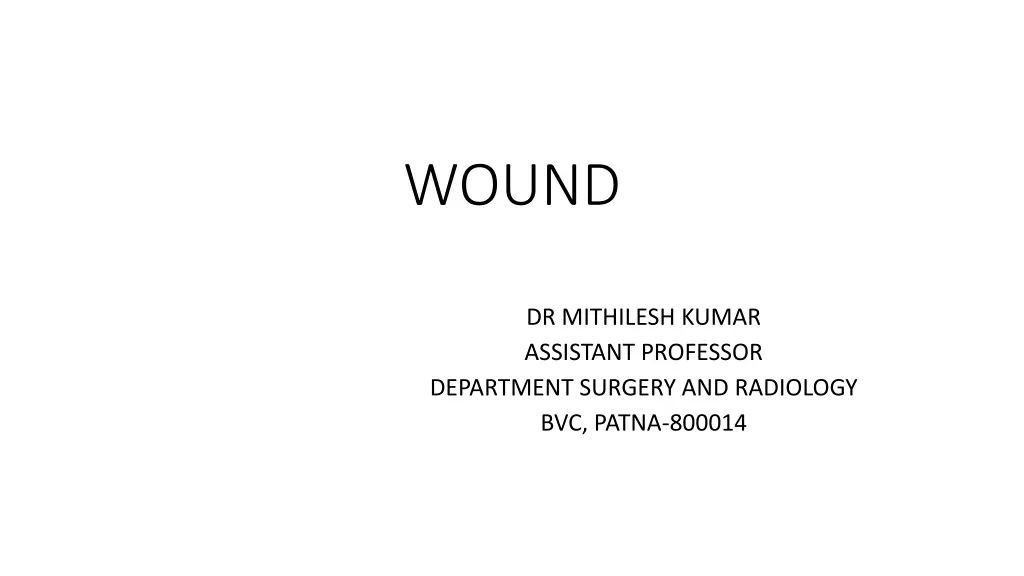
Understanding Different Types of Wounds and Wound Healing Process
Learn about various types of wounds including closed, open, and penetrating wounds. Explore concepts like contusions, bruises, hematomas, and their distinctions. Understand the characteristics of aseptic, contaminated, and infected wounds, along with granulating and ulcerative wounds. Gain insights into wound healing methods like first intention healing and the role of blood capillaries and fibroblasts in the healing process.
Download Presentation

Please find below an Image/Link to download the presentation.
The content on the website is provided AS IS for your information and personal use only. It may not be sold, licensed, or shared on other websites without obtaining consent from the author. If you encounter any issues during the download, it is possible that the publisher has removed the file from their server.
You are allowed to download the files provided on this website for personal or commercial use, subject to the condition that they are used lawfully. All files are the property of their respective owners.
The content on the website is provided AS IS for your information and personal use only. It may not be sold, licensed, or shared on other websites without obtaining consent from the author.
E N D
Presentation Transcript
WOUND DR MITHILESH KUMAR ASSISTANT PROFESSOR DEPARTMENT SURGERY AND RADIOLOGY BVC, PATNA-800014
Wound is break in continuity of soft tissues caused by trauma. Broadly classified into two groups. 1. Closed wound 2. Open wound 1.Closed wound : No break in continuity of skin or mucus membrane but underlying tissues are damaged.
Contusion: It produced by blunt objects and results in damage to subcutaneous continuity of skin. tissues without breaking Bruise : Mild degree contusions. It is due rupture of capillaries in the skin giving rise to a reddish blue or purple colouration of skin Haematoma: Collection of blood in abnormal cavity. It is seen subcutaneously or submucously.
Open wounds :- These are the open wounds (1) Incised wounds : - Caused by sharp cutting instruments (2) Lacerated wounds : Wounds appears torn and uneven edges. It may be more or less extensively injured. (3) Punctured wounds : This wounds caused by sharp pointed objects like nails.
Penetrating wound : These are deep wounds communicating with Perforating wound : This wound has two opening, one entrance and other exit. Eg. Wounds of thorax, abdomen etc. Cavities Gunshot wound: Caused by various types of firearm Abrasions : In which superficial layers of skin are only removed. Avulsions: Avulsion is wound in which actual loss of tissue.
Aseptic wound : Surgical wound made under aseptic condition Contaminated wounds : It is wound in which micro-organism are present. Infected wounds: In which micro-organism have invaded the tissues and have started multiplying and produce toxins.
Granulating wounds: - Which is showing tendency to heal. Ulcerative wounds: has no tendency to heal method of wound healing First intension healing (Primary union). The narrow space between the edges of the wound is filled with blood clot.
The blood capillaries and fibroblast grow into this from edges and healing of wound completed 5-15 days. In first intension of healing very little scar tissue is formed. 3rdday proliferating capillaries appear in the wound. 4thday fibroplasia is also evident.
2. Second intension of healing : ( healing by granulation) It is by replacement of tissue. It happens in extensive loss of tissue and edges of wound are widely separated. The granulation tissue consisting of budding capillaries and fibroblast grow from edges and bottom of wound to fill the gap.
The granulation tissue is highly vascular. It is called granulation tissue because of the granular appearance presented numerous blood capillaries. The capillaries grow up and anastomose with each other forming a network.
The fibrous tissue also proliferate and fibres are interlaid among the capillaries. With the growth of fibrous tissue and capillaries coming up to surface of wound, the surface epithelium also grows from its borders and makes healing complete. At later stage the fibrous tissue contracts, causing constriction obliteration of most of the newly formed capillaries, thereby giving the characteristic pale colour of scar tissue. Healing by second intention takes 14 to 21 days.
Mixed intention healing : Healing partly by first intention and partly by second intension. This happens when a sutured wound has partially disrupted.

